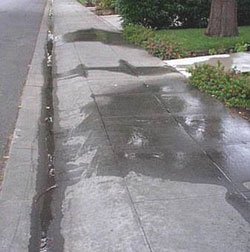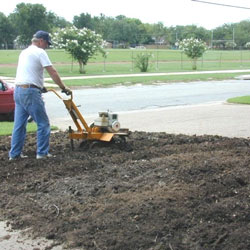SEA Stormwater
Preventing Stormwater Pollution: Parks and Grounds Maintenance
Employees who maintain our parks and landscaped areas can help reduce water pollution by following precautions in their daily activities:
- plant selection
- watering
- debris management
- soil management
- pesticide and herbicide practices

Plant Selection
- Use native or adapted perennial vegetation.
Often a misconception about native plants is that they are weedy and only used in a meadow or natural setting. Many great native perennials and shrubs are mainstays in gardens. Visit our native plants page for ideas.

Watering
- Check soil moisture and water only when the top 4" to 5" of soil is dry.
- Avoid runoff by adjusting watering time, direction and volume of spray heads.
- Turn off sprinklers during rainy weather.
- Install rain and freeze sensors on automated sprinkler systems.

Debris Management
- DO NOT dispose of grass clippings, leaves, or other debris in the storm drain.
- Remove accumulated litter and debris from storm drain inlets.
- Mow grass as high as possible leaving clippings on the lawn.
- Use composted leaves as a soil amendment or shred and add to flower beds as mulch.
- Sweep paved surfaces or blow clippings and trimmings onto grass rather than hosing down.

Soil Management
- Test soil to determine fertilizer needs.
- Aerating and composting reduces fertilizer needs, improves drainage, and promotes root growth.
- Limit soil erosion by planting vegetation on bare areas and using mulch or matting for landscaped areas.

Pesticide and Herbicide Practices
- Follow safety, storage and disposal procedures for chemicals.
- Follow label directions when mixing or applying chemicals.
- Mix chemicals on an impervious surface away from storm drains.
- DO NOT apply during windy conditions or if rain is predicted within 24 hours.
- Report any suspected problems regarding chemical applications.
- Use landscaping chemicals only as needed.
- Apply chemicals to the problem area only.
- Carefully select the appropriate product for the problem.
- Use non-toxic substitutes for chemicals when possible.